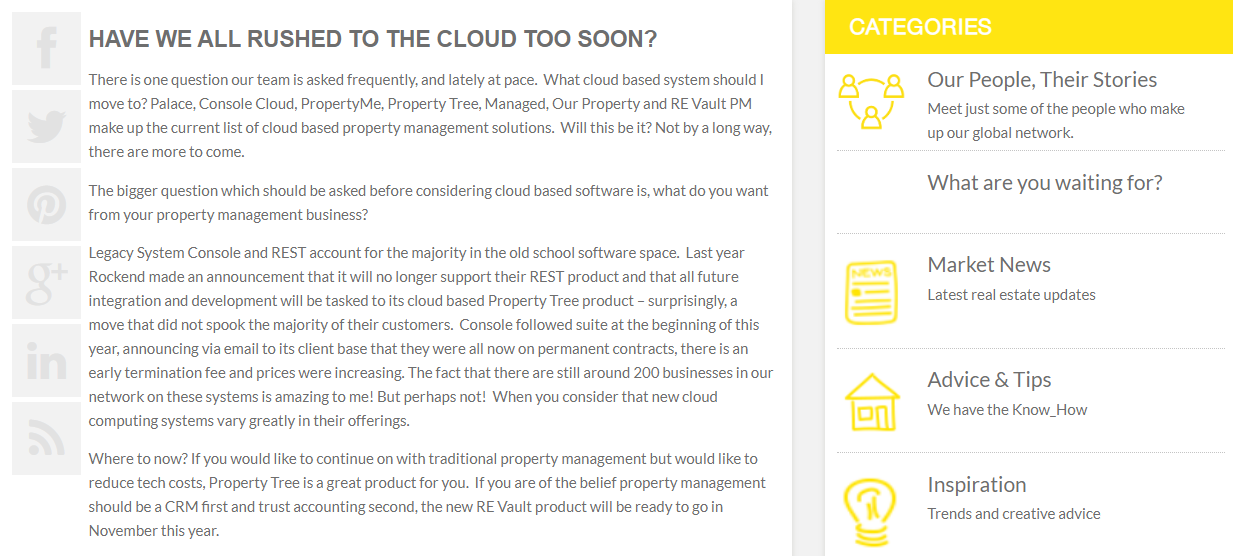You’re likely already doing content marketing or someone within your organisation is. There are not too many businesses not doing it.
What you’re likely not considering is that you need another piece to the content marketing strategy puzzle—a content strategy.
In their State of Content Marketing 2022 report, SEMRush found that while 97% of respondents claimed that content marketing was an important part of their overall marketing strategy, only 57% had a documented content marketing strategy.
This is not surprising to me.
It’s often clear just browsing the blog titles on a website that there is no content strategy driving the content marketing. There’s a disconnect between the content, the business goals, and the target audience. The posts are not optimized for search, nor do they leverage any real call to action (CTA).
It’s a shame, really, because so much time and effort can be put into content marketing, but without the direction of a content marketing strategy, it’s hard to deliver ROI. Worse, it’s hard to know whether you’re delivering ROI or not without a content strategy.
So, I want to help clear up the difference between content strategy and content marketing. Plus, I want to stress the value of the latter. Spoiler alert: it’s invaluable for your content marketing efforts.
Let’s first define content marketing and content strategy.
What is content marketing?
It’s not just blogging. It’s creating and publishing ebooks, infographics, whitepapers, case studies, email newsletters, and yes, even social media posts.
It’s designed to engage.
And for most brands, it will first appear successful when judged by pageviews, downloads, opens, and likes.
But eventually, someone within the organisation is going to ask The Question.
How much are we spending on our content marketing efforts, and what are we getting from it?
It’s at that moment that your engagement metrics don’t satisfy the questions being raised. Now I’m not here to tarnish the role of content marketing. It is one of the most efficient marketing tactics available to brands today.
It just shouldn’t be employed without a clearly defined strategy.
What is content strategy?
The most glaring issue I find when conducting a content audit is the lack of a clear objective—the why.
Why are you publishing blog posts?
There are several common content objectives a company might identify.
- Establish your business/brand as an authority or thought leader in the space.
- Generate organic traffic and brand visibility.
- Feed your social media activity and engagement.
- Engage your audience early in their user journey, so you continue to nurture them until they’re ready to convert.
- Provide the number one source of links to your site.
What else does a content strategy involve?
Like a marketing strategy, no two content strategies will have the same objectives, formats, and actionable steps. But they will seek to answer a range of queries that are too often ignored.
- Which audience segments will we be creating content for?
- How will our audience find our content? Guest posts, social media shares, Google searches, etc.
- Which medium do they prefer? E.g. written blog posts, podcasts, social, newsletters.
- What actions are we seeking from our audience? E.g. subscribe, buy, comment, download.
- Who will be responsible for content in our organisation?
- How will we measure the success of our content?
- How often will we review the success of our content?
Content examples
Studying brands and companies that have pulled off a successful content strategy can help you brainstorm great ideas. Here are three brands that leave a positive impression on me (and presumably, on their many clients and partners).
However, these examples aren’t the holy grail of content strategy, but a study in different approaches. Some that work, and some that don’t. Plus, some that are just interesting to think about.
Case Study 1: Marque Lawyers
One organisation that has built a brand to be respected is Marque Lawyers. And, at least from my perspective, it’s been driven largely by their content marketing. Specifically, their Twitter account.

They will never be accused of sitting on the fence when it comes to the values they believe in. They have a story and they live by it. I’d suggest they’d metaphorically die defending it.
This distinction is where brands are earned. Does it necessarily suggest Marque Lawyers has a content strategy? No, it doesn’t. Or perhaps it does, I don’t know.
I’m curious about their website though. Their ‘blog’ page is aptly titled ‘Soap Box’. They’re transparent in saying:
“Here’s where you come to read interesting stuff. It’s your portal into the soul of Marque, the place to find out what we think, what we’ve written, what others write about us and anything else we find fascinating or faintly intriguing.”
And that’s exactly what you’ll find.
But they haven’t published since September ‘21 and when they were publishing, they were simply adding links to PDFs. Is this how they identified their audience would like to consume content from them?
A curious case, indeed.
Case Study 2: Ray White
Ray White real estate is a big organisation with almost 1,000 franchises across 11 countries. Its blog has 444 posts, and the sixth most visible post in search is titled “Have we all rushed to the cloud too soon?.”
Sound odd? It did to me too.
It’s clear upon reading this blog post that it was intended for its franchisees. OK great, they do have 1,000 franchisees. But one would wonder whether publishing it to the main blog is where the small audience would like to read the content.
And whether it’s the best distributional channel. A defined content strategy in my mind would have determined that such content would be better delivered to private social groups or specific emails.

Case Study 3: Patagonia
Another brand I love is Patagonia. The retailer clearly has a defined content strategy. They’re aware of why people like the brand and spend a premium price for their clothing and apparel.
The objective of their content is not to generate organic traffic, which increases online sales. They use their content to strengthen their brand.
It’s certainly not the mainstream approach for e-commerce retailers, who largely opt for either bottom-of-funnel content that helps convert sales or top-of-funnel content that attracts people from search or social to the site with the intention of buying.
But, Patagonia is an established brand that doesn’t need to increase brand awareness. It has earned its spot as one of the leaders in the ethical retail industry, and now it just needs to maintain that position.

A content strategy vs. content marketing analogy
Okay, sometimes it takes a good analogy to grasp a concept. I looked everywhere for some inspiration, and in the absence of a good one, this is what I have.
It’ll take a little background though.
I’m positive everyone is familiar with this analogy:
“Telling your date they are attractive is marketing, telling your date that you are attractive is advertising, and having someone else tell your date that you are attractive is PR.”
We are, of course, talking about marketing. But let’s stick to the analogy.
Content marketing is telling several stories to your date with the intention of impressing them and ultimately winning their love and affection. You might tell them about the day that you saved a cat from a tree or how before you began studying human rights law, you used to volunteer at a dog shelter.

Content strategy would take the role of understanding exactly what you want from a partner, who you want to date, what they like, and whether they would prefer hand-written notes, SMS, or a video call. You would identify how to measure if the message was well-received and how to increase the chances that they receive it.
Does that help? I hope so because that’s the best I have.
Why it’s important to invest in a content strategy
Investing in a content strategy is a practical move not just in money terms, although that’s a major factor.
- You optimise marketing costs.
- You can track the effectiveness of marketing initiatives with specific metrics.
- You increase your chances of attracting and retaining the right audiences.
- You combine efforts from all fronts (social, email, blog, website, etc.) to achieve strategic business goals.
- You improve brand awareness and strengthen brand credibility online.
Why are we content strategists and not content marketers? As search marketers, we rely on understanding audiences and trust content to succeed. Does it make us great content marketers?
No, we’re more science than art. But, we’re well placed to help businesses achieve big content objectives like earning more organic traffic, setting up a long-term lead generation system, and boosting customer retention.
Without a content strategy, these objectives may well be words in the wind. Vague, attractive targets that nobody in the organisation knows how to hit. With a content strategy, you can lay out a detailed plan and name content marketing performance indicators (KPIs) to help you reach your key business goals.

